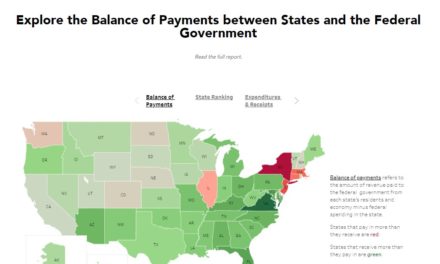WASHINGTON (AP) — More than half of U.S. cities have cut staff, canceled construction projects or raised fees this year, according to a report from the National League of Cities that catalogs the vast damage from shrunken property- and income-tax revenue.
Cities are struggling from the same problems that have left the national economy sputtering: high unemployment, a depressed housing market and weak consumer spending. Those factors have reduced the taxes that cities collect for a fifth straight year. Many have had to make up the gap by laying off employees, freezing pay, cutting services, raising fees or suspending building projects.
Two-thirds of city finance officers said they had delayed or canceled public-works projects this year. Two in five reported raising fees for city services. One in five had cut spending on public safety. Nearly one in three had laid off staffers.
“We hoped the worst would be over at this point, but given where the economic considerations are, that seems to be very unclear here in the fall of 2011,” said Christopher Hoene, director of the league’s research arm and one of the report’s authors.
Cities typically suffer the full force of a recession later than states and the nation as a whole do. That’s because many cities rely heavily on property tax revenue, which can take several years to fully reflect falling home prices.
By comparison, states rely mostly on income and sales taxes. Income-tax revenue usually falls steeply within months after layoffs. State sales tax revenue also drops as people spend less.
As states’ tax collections fell during the recession, they responded by cutting aid to cities, school districts and localities. Those cuts are expected to peak next year, according to research by the Center for Budget and Policy Priorities cited by the league’s report.
Public education is especially hurt because many school districts are funded about half by states and half by property taxes, said Michael Leachman, the center’s director of state fiscal policy.
“The bursting of the housing bubble has now caught up with property tax revenues, so that’s making it harder for local governments to offset the declines in state aid that they’ve been seeing,” Leachman said.
In Cleveland, the school board was to vote Tuesday night on whether to lay off teachers for the second time this year. The school district says it would have to find more than $10 million in cuts to help balance its budget and save the jobs of more than 300 teachers.
This past summer, the city laid off 319 employees, including 81 police officers.
“Cleveland was chugging along,” said Andrea Taylor, press secretary for Mayor Frank Jackson. “It wasn’t as if we had a big surplus, but we were managing our share of the budget crisis well. We weren’t set to have any layoffs at all.”
But she said Ohio’s recently enacted budget slashed state aid to the city by 25 percent in fiscal year 2011 and 50 percent in 2012. The budget was adopted in late June and enacted in July — a timeline so quick that Cleveland couldn’t react without laying off workers, Taylor said.
The combination of state cuts and falling tax revenue amounts to a “double-whammy” for city residents that’s likely to persist for years, said Scott Pattison, executive director of the National Association of State Budget Officers.
“States really are not in a position to go back and restore those cuts,” Pattison said. “Money is so tight, they don’t have it to start giving it back.”
Over time, the cuts tend to dampen growth by making companies reluctant to spend and hire, said Mark Vitner, senior economist at Wells Fargo Securities.
“If it becomes tougher for business to get done because of government cutbacks, or if businesses have a harder time finding skilled workers as the education system crumbles, it can create a nasty feedback loop that can go on for years,” Vitner said.
In South Carolina, cities and counties are receiving 35 percent less from the state than in the 2008-2009 budget year. To close the gap, Clinton, S.C., had to cut 10 workers from its roughly hundred-person payroll this year. Three of the 10 worked in public safety.
Interim city manager Frank Stovall said Clinton can still provide basic services. But he said some services like recreation and community policing had been cut and utility rates increased.
“We have a plan to build bike paths and green spaces and parks,” Stovall said. “It’s been sitting on our shelf now since 2003 with no hope of implementing it.”
In the Columbia, S.C. suburb of Cayce, garbage collection has been reduced from twice to once weekly. And Greer, S.C., near Greenville, has eliminated mosquito spraying and reduced leaf collection pick-ups.
The hardest-hit cities have been those that depend most on income from property taxes, the report said. Many are in the Northeast, Hoene said. By contrast, Midwestern cities tend to have steeper income taxes. And cities in the West, South and Southeast typically rely more on sales-tax revenue.
All three categories of tax revenue are expected to decline in 2011, Hoene said.
The report is based on a survey taken this spring and summer, before worsening economic data and fears about Europe’s debt woes hurt consumer confidence and caused wild swings in the stock market.
“There may be a reconsideration of that as this year continues to unfold,” said another co-author, Michael Pagano, dean of the College of Urban Planning at the University of Illinois and Chicago. “We’re looking at at least another two or three years of very troubling fiscal signals for cities and municipalities.”
The report is based on an annual survey of finance officers from cities and municipalities with more than 10,000 residents.
___



